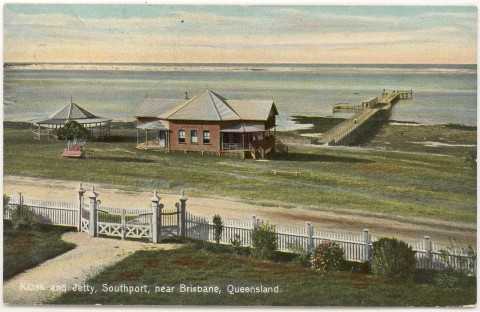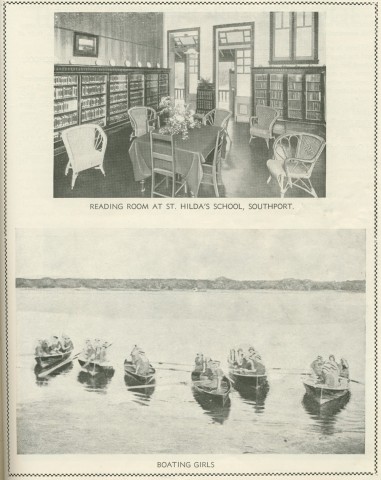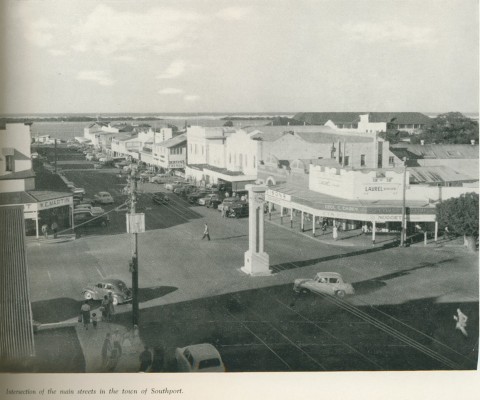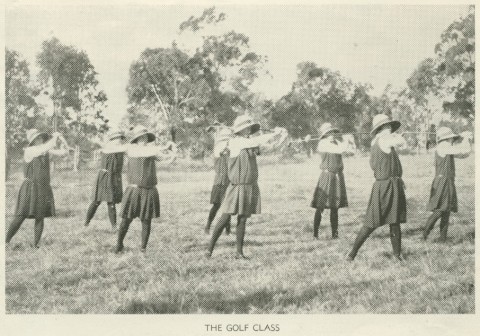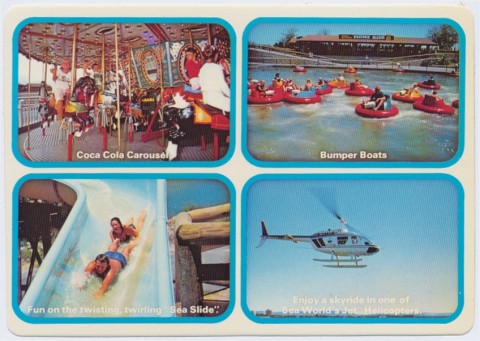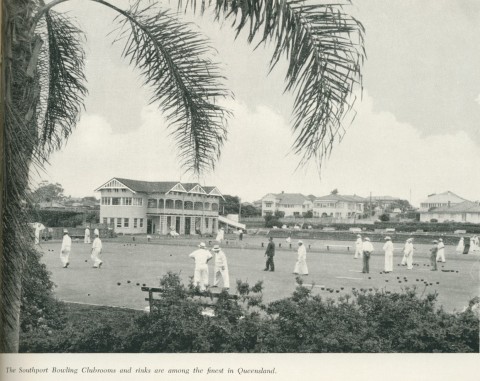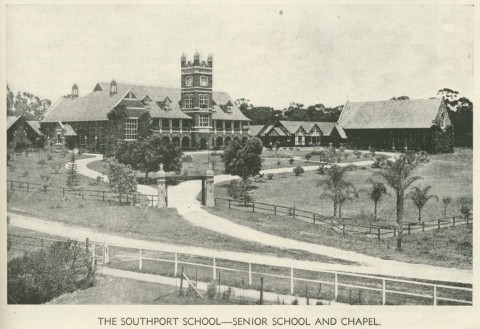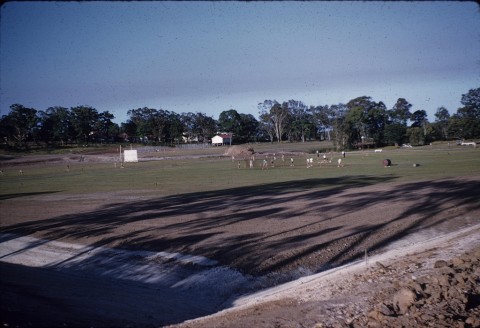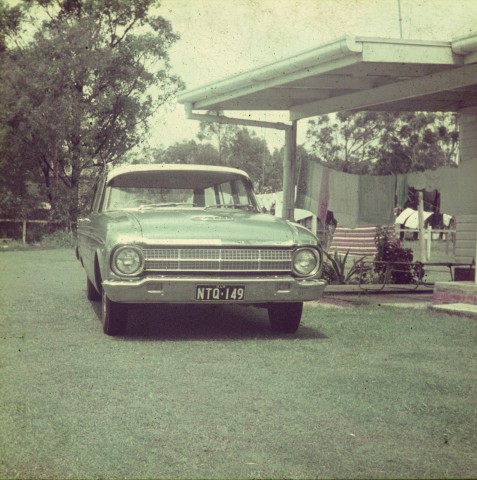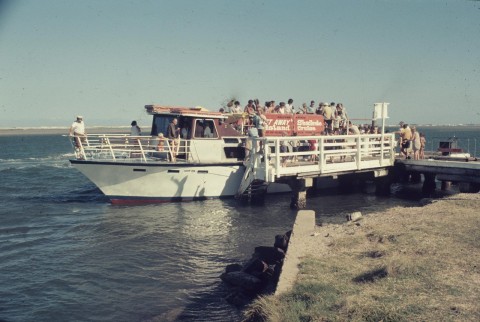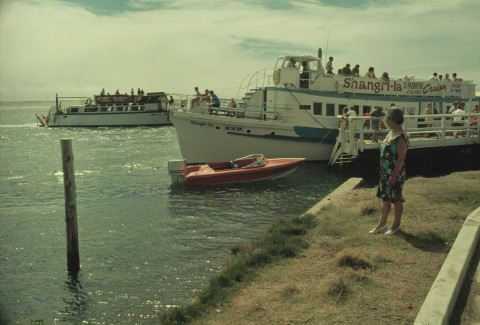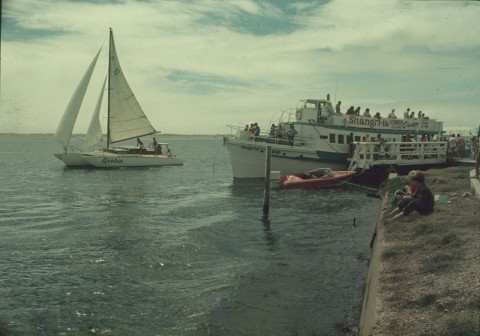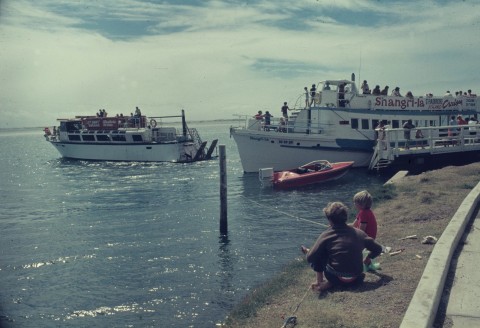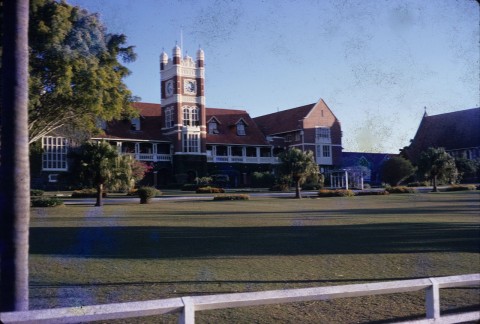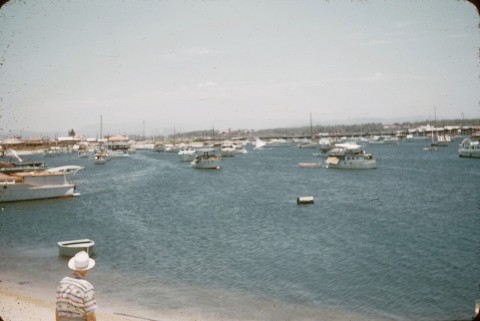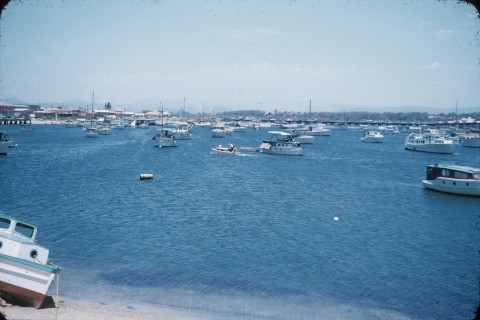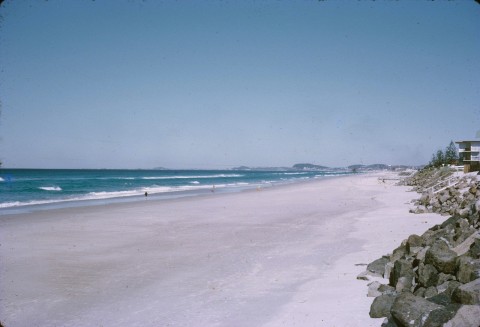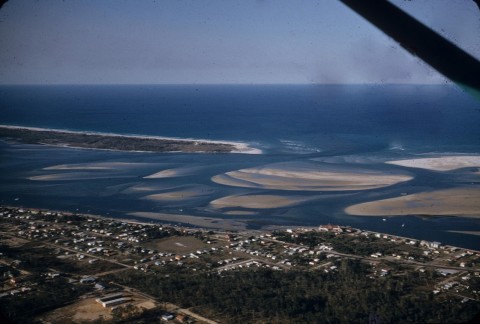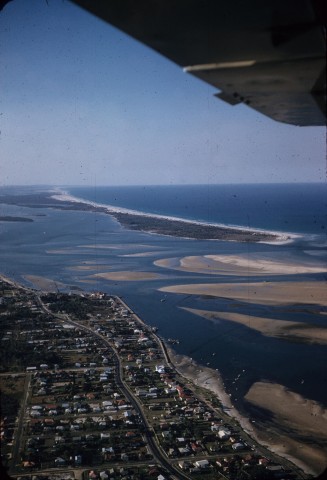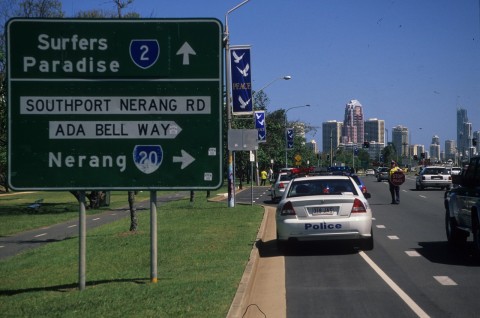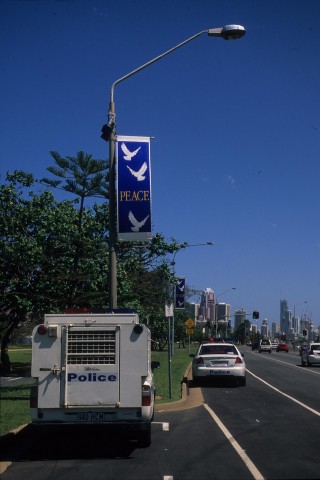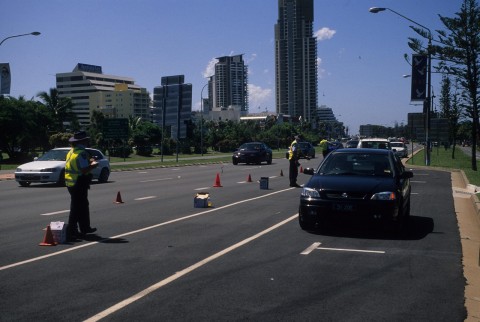Southport, a costal town of about 24,000 people, is on Queensland's Gold Coast, 65 km south-east of central Brisbane. It was probably named after the seaside town of Southport, Lancashire, England.
The future Southport town site formed part of William White's Pimpama run, a vast cattle grazing lease stretching from the Logan to the Tweed taken up in 1852. The run was brought under closer-settlement legislation in the 1870s, resulting in the allocation of numerous farm selections. In 1875 the Southport township was surveyed. Although much of the township area was ti-tree swamp, it was conveniently located for saw milling with cedar logs rafted down the Nerang River.
Southport was also known for its good fishing and congenial climate, and in 1876 an early resident converted his residence into a boarding house. Given its position, the name Southport was appropriate, as the town offered sheltered sea bathing, protected from the Pacific surf by The Spit and South Stradbroke Island. Southport, Lancashire, was England's tenth largest seaside resort town in an era when sea bathing was increasingly popular.
Congregational and Presbyterian churches were opened in about 1878, and a primary school in 1880. A pier and sea baths followed over the next several years. Queensland's Governor rented a house on the Nerang River as a summer residence, setting the tone for the town as an upper middle class society beachside haven. The opening of the railway from Nerang to Southport in 1889 brought better-off visitors who disdained the hoi polloi of Redcliffe and Sandgate, Brisbane's then-popular coastal retreats. The leasing of the Governor's summer house for use by the Southport School in 1901, an exclusive private boy's school run by the Anglican Church, further enhanced Southport's standing in polite society, as did the establishment of St Hilda's Girls' Grammar School (1912) and the Catholic Star of the Sea school (1900-1990). Coastal defence was a local preoccupation, and a militia was formed in 1887, along with the Southport Cadet Corps. A drill hall was erected in Queen Street in 1890, and it survives as a heritage-listed building. In 1903 the Australian handbook described Southport's main institutions and excursionists' facilities:
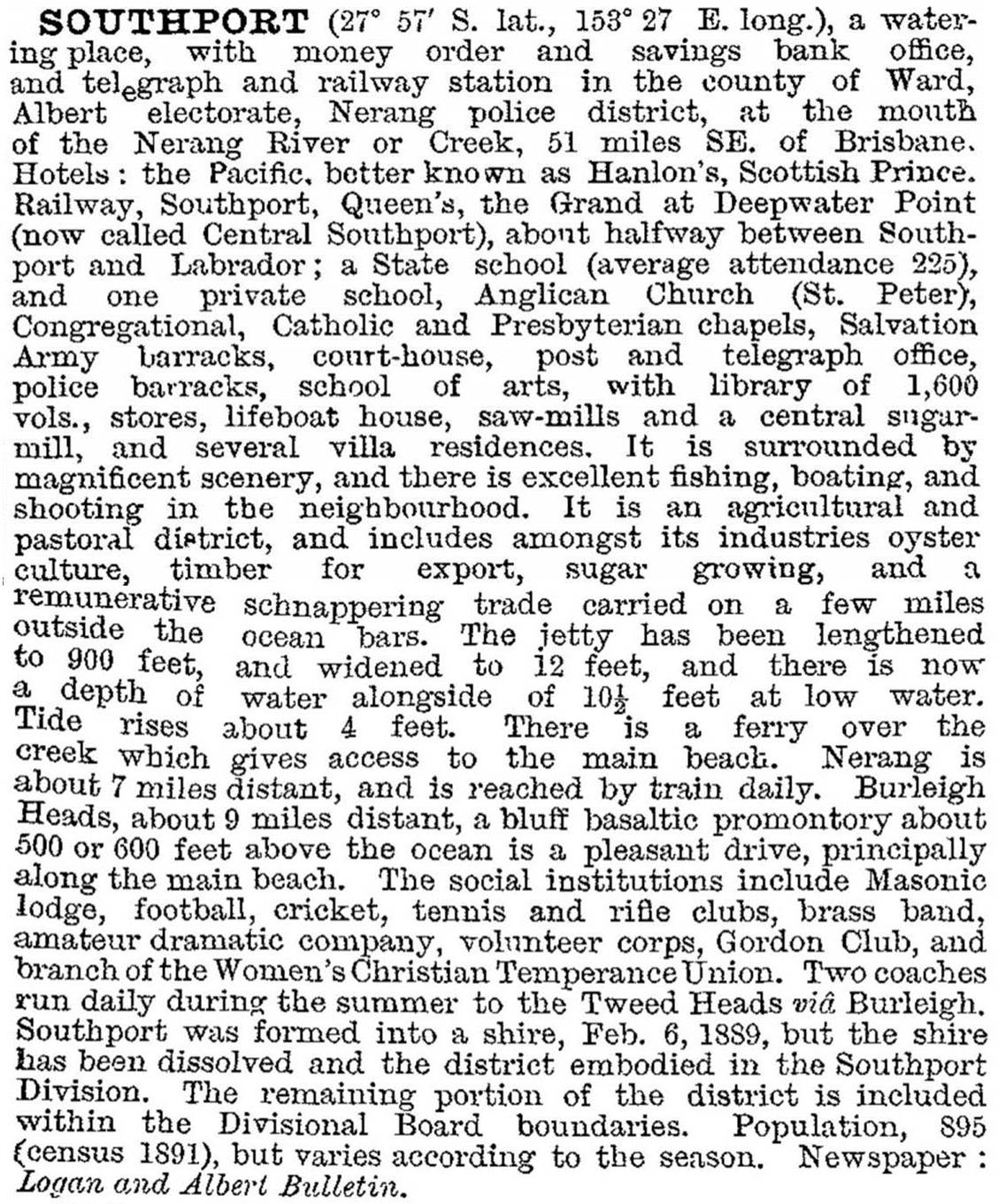
The Southport Golf Club began in 1907.
With a population approaching 2000 people and a high rateable value for its many fine residences and accommodation establishments, Southport was severed from Nerang Shire and proclaimed a separate town in 1918. A hint of things to come was the formation of the Southport Surf Life Saving Club in 1925, coinciding with the opening of the Jubilee Bridge over the Nerang River and Jim Cavill's opening of his Surfers Paradise Hotel a few kilometres south of Southport.
In 1934-35 the council built a new town hall in Nerang Street, a new bathing pavilion in Marine Parade and another pavilion with a surf life-saving facility across the Broadwater at Main Beach. All are listed on the Queensland heritage register.
Southport's population and tourist facilities continued to grow steadily, being both a popular resort and a fashionable residential and educational centre. Its postwar population of 7500 nearly trebled during Christmas and New Year, stretching the limit of its accommodation facilities. The pier had wharfage and a cinema, dance hall and amusement centre on it. Golf, tennis, croquet, bowls, horse riding and excursions to the nearby mountains occupied visitors' time.
Southport was described in the 1946 Australian Blue Book:
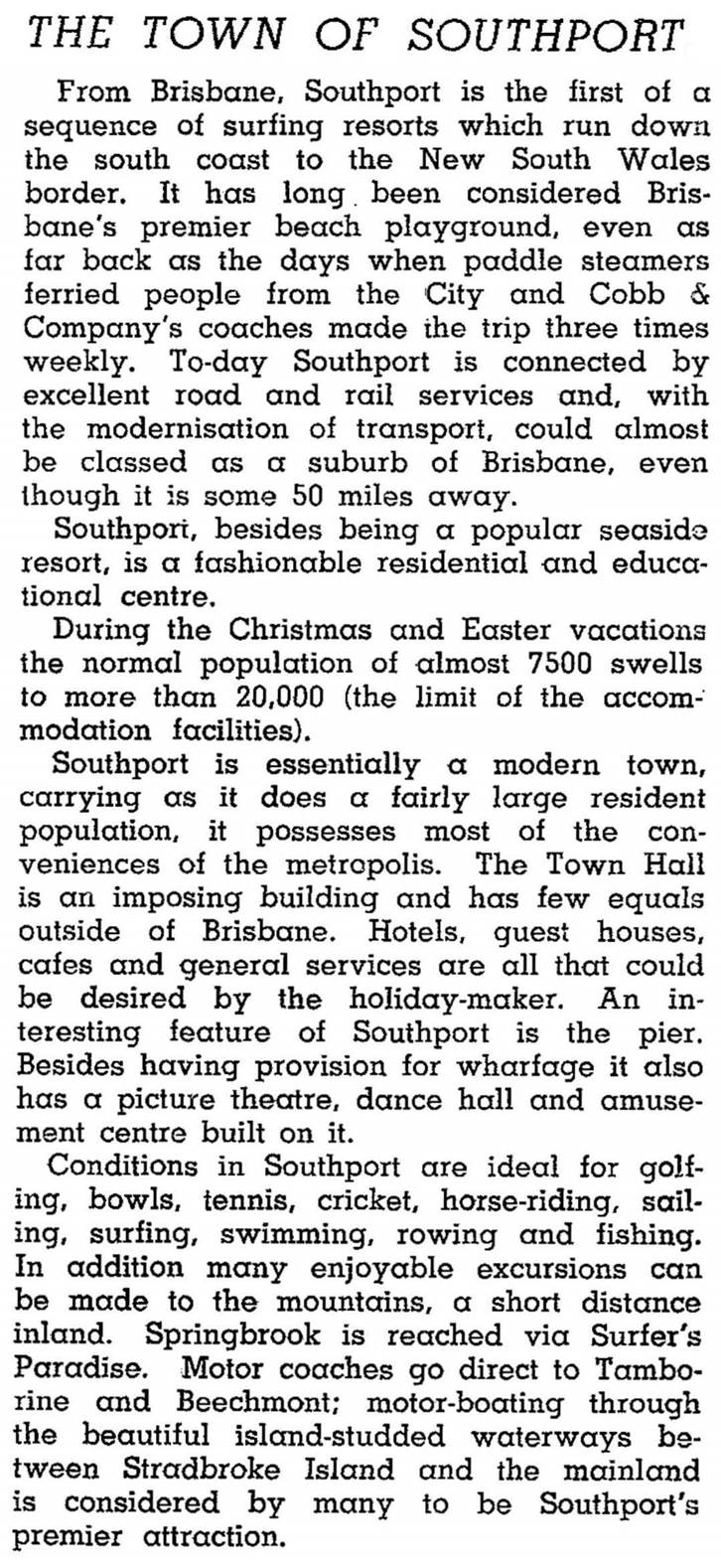
In the early 1950s Southport was still described as the largest resort of the area, with a flying boat based on the Broadwater and 50 houses a month being built when postwar building restrictions were lifted in 1952. The Southport municipality also expanded in 1949, amalgamating with Coolangatta and forming the South Coast Town Council, extending from Labrador to Coolangatta. In doing so, the swampy inland reaches of the Nerang River were omitted, leaving the adjoining Albert Shire with the as yet unrealised canal estates of the 1960s-80s.
Southport's prominence waned somewhat in the postwar period, as the foreshore motel and apartment booms along the Gold Coast south of the town exploded. Nevertheless Southport continued as the administrative centre for the Gold Coast City (the successor to South Coast), as well as the area's business and government centre. In 1995 it had 7700 sq metres of office space and 83,000 sq metres of retail space, including Australia Fair shopping centre and Marine Mirage Shopping complex on The Spit, Southport Park shopping centre and a long shopping strip in Scarborough Street.
Southport is also a medical and educational centre with the state Gold Coast Hospital and a Catholic college (1964), a campus of Griffith University, and two State high school (1955, 1973) in addition to the two Church of England grammar schools mentioned earlier. There are also a Catholic primary school (1901) and College (1964), a second State high school (1973) and a Lutheran college in neighbouring Ernest/Molendinar. Southport has a generous foreshore reserve, looking across the Broadwater to Sea World and the Sheraton Mirage hotel. It also houses several aged persons' facilities.
In the north of Southport is the locality of Musgrave Hill, which includes a university campus, Musgrave Hill State School (1963) and an extensive array of sports fields.
In July 2014 Southport was linked along the 13 kilometre light rail corridor between the Gold Coast University Hospital and Broadbeach South.
Southport's census populations have been:
| Census Date | Population |
|---|---|
| 1881 | 230 |
| 1901 | 1230 |
| 1921 | 3551 |
| 1933 | 4218 |
| 1954 | 8134 |
| 1961 | 12,746 |
| 1986 | 18,930 |
| 2006 | 24,097 |
| 2011 | 28,315 |
Michael Jones, Country of five rivers: Albert Shire 1788 – 1988, Sydney, Allen & Unwin, 1988
Robert Longhurst, Southport: images of yesteryear 1880-1955, Gold Coast, Gold Coast City Council, 1994
Alexander McRobbie, The Surfers Paradise story, Surfers Paradise, Pan News,1982
Penrod's Guide to South Coast Queensland Shore and Mountain Resorts, Brisbane, Penrod Guide Book Co, 5th ed, c1957
Souvenir of Southport and Surfers Paradise, Brisbane, Australian Publishing and Advertising Co, 1937
Southport in profile, Gold Coast, Gold Coast City Council, c1995
